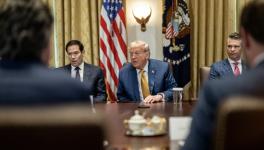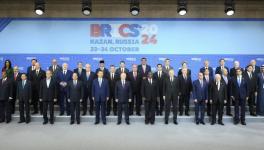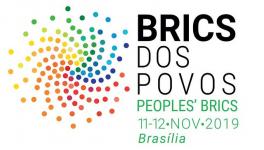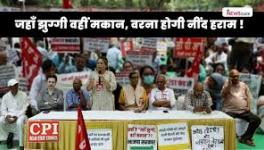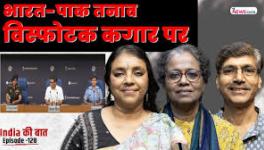Affordable Medicine: Has Indian Patents Act Succeeded?

Ever since the introduction of the Agreement on Trade Related Aspects of Intellectual Property Rights (TRIPS) under the World Trade Organization (WTO), patents have critically impacted pharmaceutical products and the prices that patients have had to pay for them.
For developing countries, the TRIPS Agreement meant one of the two things: either, it meant introduction of patents in pharmaceuticals, since in many countries, their patent laws did not cover pharmaceuticals, or two, it meant introducing product patents in pharmaceuticals, alongside the existing process patent regime in countries like India. Further, the TRIPS Agreement lacked clarity regarding any major remedy to address cases of abuse of patent monopoly, namely grant of compulsory licences, which was clarified six years after the commencement of implementation of the Agreement in the Doha Ministerial Conference of the WTO.
India’s law makers had developed a TRIPS-compliant patent regime with an eye to ensuring access to affordable medicines in the country. Though the TRIPS Agreement has strengthened the patent regime, there are several flexibilities in the Agreement that can be taken advantage of to ensure that patent holders do not enjoy a free run in India. The law makers included these flexibilities in India’s TRIPS-compliant patent law so that the domestic pharmaceutical companies could provide affordable generic medicines as they had done prior to the adoption of the TRIPS Agreement.
The first of these flexibilities was the denial of patents on minor modifications of a patented product after its 20-year term of patent protection had lapsed using the provisions of Section 3(d) of the Patents Act, 1970. Second was the inclusion of provisions for the grant of compulsory licences if prices of a proprietary medicine was high and the patent holder was unwilling to produce the product in India. And third was the authorising of pre-grant opposition of patent applications, de facto a peer-review mechanism for filtering applications whose covered products/processes do not merit patent protection in India. We aim to discuss the first two flexibilities.
Though the TRIPS Agreement has strengthened the patent regime, there are several flexibilities in the Agreement that can be taken advantage of to ensure that patent holders do not enjoy a free run in India.
Section 3(d): Preventing grant of patents on minor modifications
Section 3(d) seeks to prevent grant of patents on minor modifications of products that have already enjoyed patent protection, better known as “ever-greening”. Section 3(d) does not allow grant of patents on “mere discovery of a new form of a known substance which does not result in the enhancement of the known efficacy of that substance or the mere discovery of any new property or new use for a known substance or of the mere use of a known process, machine or apparatus unless such known process results in a new product or following: employs at least one new reactant”.
An explanation provided to this Section says the following:
“salts, esters, ethers, polymorphs, metabolites, pure form, particle size, isomers, mixtures of isomers, complexes, combinations and other derivatives of known substance shall be considered to be the same substance, unless they differ significantly in properties with regard to efficacy”.
This exclusion is aimed at ensuring that a product can be considered for the grant of patent only when the applicant can prove that the claimed invention has “enhanced efficacy”* over an existing product. In other words, a “secondary patent” on an existing patent cannot be granted in India.
Several originator companies have made it a common practice to create a minor variation to proprietary medicines and seek another “full” term of patent protection on the trivial modifications, and to repeat this process for as long as possible. This strategy works well for these companies as they successfully block new entrants into the market even after the patent on the original medicine expires.
The first evidence against “evergreening” was provided by Thomas Jefferson, one of the primary framers of the US Constitution. Jefferson is widely believed to have been influential in drafting the Intellectual Property Clause of the Constitution (Article 1, Section 8, Clause 8), which states:
“The Congress shall have power to promote the progress of science and useful arts, by securing for limited times to authors and inventors the exclusive right to their respective writings and discoveries.”
However, in his later writings, Jefferson made an important observation:
“Certainly an inventor ought to be allowed a right to the benefit of his invention for some certain time. It is equally certain it ought not be perpetual …”.
Jefferson had clearly ruled against tendencies to perpetuate patent monopolies beyond the period for which a product received property rights -in other words, “evergreening” of patents.
Discussions in the Uruguay Round negotiations that led to the adoption of the TRIPS Agreement also provide the basis for Section 3(d) in our view. Participants dwelled on the problems arising from too short a period of patent protection to recoup the returns on investments in research and development (R&D). They, therefore, argued that new norms and standards of intellectual property (IP) protection were needed, including longer periods of patent protection. This, they opined, would sufficiently incentivise R&D activities so that new molecules can be produced.
These arguments were consistent with the persuasive position taken by Douglass North, who had argued that “development of a patent system and other laws protecting intellectual property ... encouraged the growth of innovation.” This implies that longer terms of patent protection can be justified only when innovators provide innovative products and processes, instead of minor modifications of known substances. In other words, providing 20-year patent protection for minor modifications of existing substances would be tantamount to egregious rent seeking and would therefore be anti-competition and anti-innovation.
A strong case in favour of Section 3(d) as an effective bulwark against “ever-greening” was made by the Technical Committee (better known as the ‘Mashelkar Committee’) that was appointed by the Indian government to advise whether the Patents Act should limit the grant of a patent for pharmaceutical substance only to new chemical entities. The Mashelkar Committee recommended that the Patents Act must prevent “evergreening of patents”, achieved by “executing trivial and insignificant changes to an already existing patented product.”
Section 3(d)’s legal validity was tested in the case that arose when Novartis petitioned against the rejection of its patent claim. The company had applied for a patent for the beta crystalline form of its anti-cancer drug, imatinib mesylate in 1998.** The application was rejected by the Indian Patent Office on three grounds, namely, that the claimed invention: (i) was anticipated by prior publication, (ii) was obvious to a person skilled in the art judging from the disclosure provided in the patent specifications, and (iii) failed to meet the Section 3(d) standards. Novartis petitioned before the High Court of Madras against the Patent Office ruling on its patent application. After the Intellectual Property Appellate Board (‘IPAB’) became functional in 2007, Novartis filed an appeal against the rejection of its application. When the IPAB rejected the patent claim, Novartis filed an appeal before the Supreme Court of India.
In other words, providing 20-year patent protection for minor modifications of existing substances would be tantamount to egregious rent seeking and would therefore be anti-competition and anti-innovation.
The Supreme Court heard the appeal of Novartis against the decision of the IPAB. The Court examined Novartis’ petition in light of the criteria for inventive step laid down in Article 2(1)(j) and 2(1)(ja). In particular, the Court asked if the product for which Novartis claimed patent protection qualified as a “new product” which was an invention that involved technical advance over existing knowledge and made the invention “not obvious” to “a person skilled in the art”.
Upon examining the reliance on Section 3(d) by the IPAB to reject Novartis' application for a patent for imatinib mesylate, the Supreme Court made a critical observation. Section 3(d), it stated, “clearly sets up a second tier of qualifying standards for chemical substances/pharmaceutical products in order to leave the door open for true and genuine inventions but, at the same time, to check any attempt at repetitive patenting or extension of the patent term on spurious grounds”. The top Court thus denied patent rights to Novartis for its anti-cancer drug since the claimed invention, in its view, did not meet the test of novelty and inventive steps besides failing to meet the requirements of Section 3(d).
Effective implementation of Section 3(d) and a TRIPS-compliant patent regime should have mitigated “evergreening”. However, studies have shown that grant of secondary patent is a major weakness in the implementation of India’s TRIPS-compliant patent regime. Between 70 to 80 percent of the pharmaceutical patents granted since the introduction of the product patent regime in 2005 are secondary patents.
India’s robust compulsory licensing system
The second amendment of the Patents Act was undertaken in 2001 after the Patent Amendment Bill was deliberated on by a joint committee of the two Houses of the Parliament. Through this amendment several substantive amendments were introduced in India’s Patents Act that fully reflected the spirit of the Doha Declaration in terms of addressing public health concerns.
Key amendments were made in the compulsory licensing system through the inclusion of two important instruments - special compulsory licences (Section 92) and government use of inventions (Section 100). These provisions were in addition to the provisions relating to the “working of patents” and the grant of compulsory licences, in keeping with the relevant provisions of the Paris Convention.
Unfortunately, successive governments have been reluctant to use compulsory licensing provisions in order to improve affordability of medicines in India.
The highlight of this set of amendments was Section 83, “General principles applicable to working of patented inventions”. Policy makers would do well to take note of three substantive provisions of this Section:
(i) patents are granted to encourage inventions and to secure that the inventions are worked in India on a commercial scale and to the fullest extent that is reasonably practicable without undue delay;
(ii) patents are not granted merely to enable patentees to enjoy a monopoly for the importation of the patented article; and
(iii) patents granted should not impede protection of public health and nutrition and should act as instrument to promote public interest specially in sectors of vital importance for socio-economic and technological development of India.
This provision also made it clear that patents granted “do not in any way prohibit Central Government in taking measures to protect public health.”
Under normal circumstances, compulsory licences can be granted in India after three years from the date of the grant of a patent, subject to the following conditions:
(i) reasonable requirements of the public with respect to the patented invention have not been satisfied;
(ii) patented invention is not available to the public at an affordable price; and
(iii) the patent is not “worked” in India.
But due to the farsightedness of Indian lawmakers, two critical provisions appropriate for use during the pandemic were included.
Section 92 allows the Centre to issue compulsory licences any time after the grant of a patent “in circumstances of national emergency or in circumstances of extreme urgency”. The Controller of Patents is authorised to grant a licence to any person interested in producing the patented product and on such terms and conditions as the Controller deems fit. The provision of Section 92 can be applied in case of “public health crises … or other epidemics”.
But other than invoking the compulsory licensing system once, the government has refused to grant compulsory licences, a move that could have made medicines in several therapeutic areas affordable for the people.
Section 100 enables the Centre, or any person authorised by it, to use the invention “at any time after an application for a patent has been filed at the patent office or a patent has been granted”. In other words, if a vaccine or a medicine has been granted a patent in India, or an application for the grant of a patent in India has been made, the government can authorise anyone to produce such product in the country. During the discussions on the Patent Amendment Bill in the Parliament, the then Commerce and Industry Minister, Murasoli Maran, had explained that the government can use this provision “only in the interest of public health system. They can procure [patented medicines] and sell [them] to hospitals or they can give it to third parties” for producing in the country.
Recently, the Supreme Court “outlined the legal framework within which the Central government can possibly consider compulsory licensing and government acquisition of patents (Sections 92 and 100) and observed that the government was free to choose any other course of action it deemed fit to tackle the issue of vaccine requirements in an equitable and expedient manner, which may involve negotiations with domestic and foreign producers of vaccines”.
However, in its subsequent affidavit before the Court, the government expressed reluctance to “exercise of statutory powers either under the patents act 1970 read with TRIPS Agreement and Doha Declaration … can only prove to be counter-productive at this stage” since the “central government is very actively engaging itself with global organisations at a diplomatic level to find out a solution in the best possible interest of India.”
Unfortunately, successive governments have been reluctant to use compulsory licensing provisions in order to improve affordability of medicines in India. Consequently, these provisions were used only after an American company charged nearly Rs. 3 lakhs for a month's supply of an anti-cancer medicine. The government’s grant of a compulsory licence to a domestic manufacturer helped in reducing the price of the medicine to below Rs. 9,000. The benefits of granting compulsory licences are thus clear and demonstrable.
The second important development that the government needs to take into consideration is that when countries around the world are faced with a public health crisis of this magnitude, developed countries, which have been against granting of compulsory licences in the past, are not likely to mount a major opposition. This looks like a distinct possibility after the US, the most strident opponent of the compulsory licensing system, completely changed its position. In its recently unveiled Special 301 Report, the annual review of the state of intellectual property protection and enforcement in US trading partners, the Biden-Harris Administration stated that it “respects its trading partners’ rights to grant compulsory licenses in a manner consistent with the provisions of the TRIPS Agreement and the Doha Declaration”.
This is the first time since the adoption of the Doha Declaration that an American administration has lent its support to the use of compulsory licensing system by its partner countries. When there are incontrovertible reasons for granting compulsory licences and also when global sentiments towards this instrument have changed, should the Government of India still remain reluctant to use it?
By way of conclusions
The inclusion of the TRIPS Agreement in the WTO sounded alarm bells for access to affordable medicines as the norms and standards for patent protection were ratcheted up. In India, for instance, the introduction of the product patents in pharmaceuticals, threatened the existence of its domestic pharmaceutical industry and hence the supply of affordable generics. However, India’s law makers crafted a TRIPS-compliant patent law regime that included several critical flexibilities, which provided the space to the generic producers to grow in the post-TRIPS phase.
Two major flexibilities that the lawmakers had introduced in India’s Patents Act are Section 3(d) and compulsory licensing to keep prices of medicines in the country within affordable limits of most of the citizens. Unfortunately, Section 3(d) has been inadequately implemented, as the grant of secondary patents have proliferated. Compulsory licensing has been used only once, despite the fact that extremely high priced medicines have become commonplace in India. But other than invoking the compulsory licensing system once, the government has refused to grant compulsory licences, a move that could have made medicines in several therapeutic areas affordable for the people. Successive American governments have demanded the removal of these flexibilities from India’s Patents Act. One hopes that the Government of India puts India’s interest first and does not yield to such pressures, for if it does, access to affordable medicines in the country would be seriously compromised.
Professor Biswajit Dhar is Distinguished Professor, Council for Social Development, New Delhi.
Courtesy: The Leaflet
Get the latest reports & analysis with people's perspective on Protests, movements & deep analytical videos, discussions of the current affairs in your Telegram app. Subscribe to NewsClick's Telegram channel & get Real-Time updates on stories, as they get published on our website.









